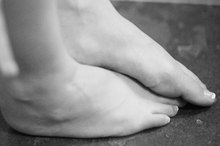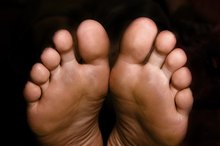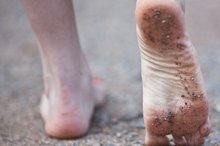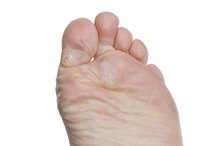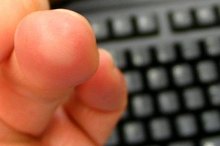About Calluses on Your Thumb
While calluses on the feet are common and generally unseen, thumb calluses are located in a more prominent and noticeable position. A callus on your thumb can be an unsightly embarrassment or simply a conversation starter, but it is rarely a medical concern. Learn the physiological mechanism of callus formation to understand how to prevent and treat thumb calluses.
If you are experiencing serious medical symptoms, seek emergency treatment immediately.
How Calluses Form
A callus is an area of thick, toughened skin that can form as a response to repeated pressure or friction. A clavus, or corn, is a type of callus that specifically forms on hairless skin surfaces, such as the fingers and toes. Many calluses form as a result of repeated motions that place slight pressure on the same areas over and over. Calluses are not in and of themselves painful, although a very hard callus can cause pain under pressure.
- A callus is an area of thick, toughened skin that can form as a response to repeated pressure or friction.
- A clavus, or corn, is a type of callus that specifically forms on hairless skin surfaces, such as the fingers and toes.
Causes of Thumb Calluses
Diseases That Mimic Gout
Learn More
Thumb calluses occur in individuals whose occupations, hobbies or habits put repeated pressure on a part of the thumb. Professional milkers, who use a particular grip many times a day to milk cows, often develop calluses on the backs of their thumbs. Chronic thumb-suckers often develop a thumb callus at the point where the teeth contact the skin. Cellists, jewelers, cherry pitters and others who do repetitive work with their hands may be susceptible to thumb calluses.
- Thumb calluses occur in individuals whose occupations, hobbies or habits put repeated pressure on a part of the thumb.
Preventing Calluses
Calluses form to protect the skin 1. For some individuals, such as guitar players, finger calluses are desirable, as they alleviate discomfort associated with playing. Others may feel that calluses are annoying or unsightly and wish to prevent their formation. The simplest way to avoid calluses is to avoid repeated pressure on a single spot. Changing grips or varying activities can slow callus formation, but this solution is not always feasible for professionals who develop occupational calluses. You may wear gloves to avoid friction, or affix pads that spread pressure over a wider area.
- Calluses form to protect the skin 1.
- Changing grips or varying activities can slow callus formation, but this solution is not always feasible for professionals who develop occupational calluses.
Treatment Options
What Are the Causes of Seed Corns?
Learn More
Once a callus exists, it is more difficult to treat or remove the problem. Occasionally, calluses may rip off, tearing the soft surrounding skin and causing pain. To avoid this issue, treat calluses by sanding the hardened area with a callus remover or emery board. This will remove layers of hard skin. Regularly apply moisturizer to the area to soften and treat the skin.
- Once a callus exists, it is more difficult to treat or remove the problem.
- To avoid this issue, treat calluses by sanding the hardened area with a callus remover or emery board.
Related Articles
References
- Medscape Reference: Clavus
- DeLauro T and DeLauro M (2012) Chapter 98: Corns and Calluses. Fitzpatrick's Dermatology in General Medicine (8th Edition). New York, New York: McGraw-Hill Education. ISBN-13: 978-0071669047.
- American Academy of Dermatology Association. How to treat corns and calluses. 2019.
- Reddy P, Anusha T, Haritha N, Nagendra A, Bhavani D, Gandhimathi R. Case report on non-surgical treatment for foot corn. International Journal of Dermatopathology and Surgery. 2018;4(1).
- American Academy of Dermatology Association. How to Treat Corns and Calluses. 2019.
- DeLauro T and DeLauro M (2012) Chapter 98: Corns and Calluses. Fitzpatrick's Dermatology in General Medicine (8th Edition). New York, New York: McGraw-Hill Education. ISBN-13: 978-0071669047.
Writer Bio
Mary MacIntosh has been writing professionally since 2007, contributing articles to "The California Tech" and serving as an editor for the "Biweekly Frink Digest." She is pursuing a Bachelor of Science in computational neuroscience at the California Institute of Technology.
